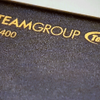SSD Performance Crystal DiskMark
SSD Performance Crystal DiskMark
I really don't need to introduce this benchmark, as it is - perhaps - the piece of software used to demonstrate raw drive performance. It was updated some time ago to include new tests to replace the ageing old ones. Naturally, sequential reads and writes can paint your product in the best possible light, but it is random reads/writes that represent storage media in their most 'real-world' use case. We test using 1 GiB, and do so using 3 runs, one after the other (without giving the drive a chance to cool in any way, though a word on drive temperatures in the conclusion of this review is included). Compare it to the Seagate drive, and it's a 'win some, lose some' affair. The PD400 does well when compared to the Seagate product in sequential read and write, with the only area in which the PD400 loses out is the 4KiB Q8T8 test, coming up short by c. 40 MB/s. In the rest of the suite, though, it wins, sometimes quite handily.
Not a bad result for the PD400, then, but... Again, but the problem is that T5 drive. If you're after absolute raw performance, then it might well be worth that significant extra price tag? After all, if you're in the market for the T5 anyway, and your work depends on speed, what is an extra 2x in terms of expense from c. £90 to c. £170-180? Either way, it absolutely crushes the PD400 and Seagate drives in sequential read/write, and I suspect the same would continue to happen in the other tests as well. Sadly, the benchmarks done on the T5 when we had the drive in for testing were done on the old version of CDM. Next, HD Tune Pro.
Samsung T5 - portable USB 3.1 Gen 2 SSD unit 500GB
Samsung T1 - portable USB 3.0 SSD unit 500GBB




